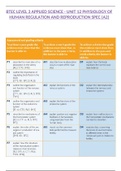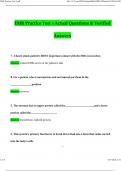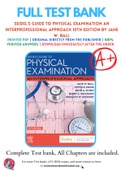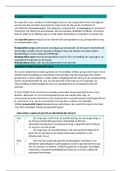Summary
Summary:Assignment 2- The Nervous and Endocrine System- BTEC Applied Science- Unit 12 Control and Coordination of the Human Body Unit 12 Physiology of Human Regulation and Reproduction *D AWARDED FOR UNIT*
- Course
- Institution
- Book
All notes for BTEC Applied Science Unit 12 - Physiology of Human Regulation and Reproduction. Includes Assignment 1 Nervous & Endocrine System (P1, P2, M1, D1), Assignment 2 Kidney Osmoregulation (P3, M2), Assignment 3 Homeostasis (P4, P5, M3, M4, D2, D3), Assignment 4 Reproduction (P6, P7, M5, D4)...
[Show more]













